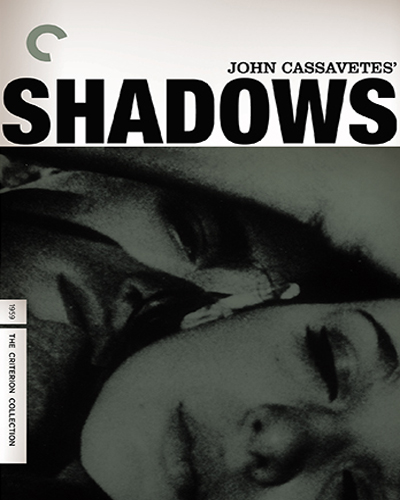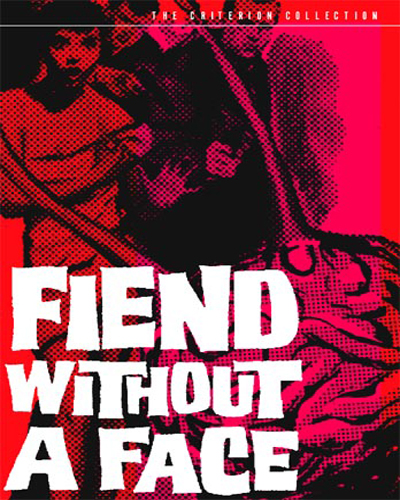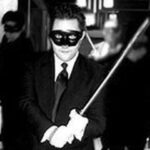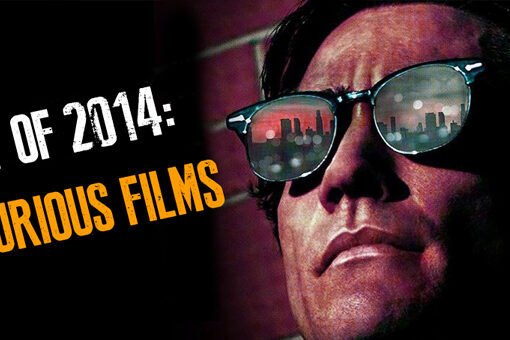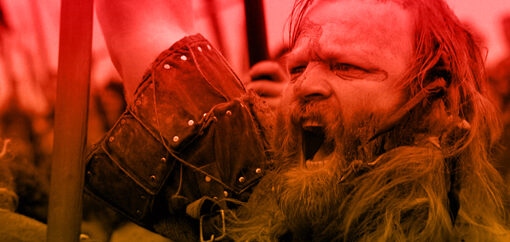If you collect movies on home video, Criterion is one of the legendary companies that have represented a deep appreciation and conservation of cinema in that format since 1984. Their first wave of releases were on Laserdisc and a decade or so later in 1998 they moved into the DVD market. Over the years they have given a gift to movie aficionados by making available hundreds of international cinema classics for their home viewing enjoyment. Criterion is well known for their attention to excellence in how they produce and promote their titles. Whenever you hear of a favorite film that’s getting the “Criterion treatment” you simply know it’s a must own for your library. Without further ado, here’s our new list of 100 Furious Criterion Classics (a 10 part series) we love and recommend to readers for purchase. You can help support this site and our greater Cine-Coalition Network by buying the DVDs/Blus directly from Amazon. We Thank You!
CRITERION PICKS: PART ONE – TWO – THREE – FOUR – FIVE – SIX – SEVEN – EIGHT – NINE – TEN
The Beastie Boys Video Anthology (2000, Dir: Various)
The Beastie Boys are one of the legendary hip hop groups that helped popularize that form of exciting urban music in the 1980s and 90s. Over the past 25 plus years they’ve dropped science with a depth and precision while keeping the old school sounds alive and well. As a longtime fan, I need to say THANK YOU to the late great Adam Yauch (MCA) and his bros Adam Horovitz (King Ad Rock) and Michael Diamond (Mike D) for creating such incredibly entertaining music. They’re one of my all time favorite bands. For fans of the rap icons, this comprehensive, super dope collection of their filmed works is a must own. It includes 18 classic music videos including: “Intergalactic” “Shake Your Rump”, “Gratitude”, “Something’s Got to Give”, “Sure Shot”, “Hey Ladies” “Looking Down the Barrel of a Gun”, “Body Movin’”, “So What’Cha Want”, “Sabotage”, “Shadrach”, “Three MCs and One DJ”, “Ricky’s Theme”, “Pass the Mic”, “Holy Snappers”, “Root Down”, “Netty’s Girl” and “Alive”. Viewers will get to choose from 100 video angles and audio tracks at any time during playback. There’s also more than forty remixes by Beastie Boys and fellow artists. Audio commentaries by the band and the video directors including Adam Bernstein, Evan Bernard, Tamra Davis and Spike Jonze give the behind the scenes rundown.
Five Easy Pieces (1971, Dir: Bob Rafelson)
A misanthropic ex-piano prodigy named Bobby Dupea (Jack Nicholson) can’t seem to settle down no matter how hard he tries. Bobby’s cute but annoying girlfriend Rayette (Karen Black) wants to take their relationship to the next level but he has too many unresolved personal troubles and a very bad attitude. When Bobby visits his ailing father and siblings, his feelings of confusion and inner turmoil seems to only be exacerbated. One of Jack Nicholson’s early breakout roles following his B-movie career and a main piece of the edgy, rebellious filmmaking that kickstarted the 70s New Hollywood era. Co-starring Billy Green Bush, Sally Struthers and Ralph Waite.
Repo Man (1984, Dir: Alex Cox)
A young angry punk rocker named Otto Maddox (Emilio Estevez) quits his job as a stock boy and finds himself with nothing to do. That is until he meets Bud Wiser (Harry Dean Stanton) a veteran repo man who pays him to help steal back a car from a defaulting client. Soon Otto realizes this profession is perfect for him because of the intensity and adrenaline rushes that come with the jobs. Meanwhile in New Mexico, a mysterious man has stolen a Chevy Malibu that is rumored to contain the remains of alien beings and it ends up in LA. When the car appears on the repo radar, a race between Otto’s business, some repo rivals as well as the Feds to try to recover the vehicle begins. The punk rock soundtrack featuring such classic acts as Iggy Pop, Black Flag, The Circle Jerks, The Plugz and Fear is the perfect background music for this offbeat sci fi/comedy cult classic!
Eraserhead (1977, Dir: David Lynch)
A dark, surreal tale set against an industrial backdrop about a man named Henry Spencer (Jack Nance) who takes care of his newborn severely deformed baby and experiences a wide variety of visions and hallucinations. Inspired by Lynch’s own fears of fatherhood as well as artists such as Franz Kafka and Nikolai Gogol, it’s an unforgettable, sickening cult classic that began Lynch’s career as an avant garde cinema stylist. Co-starring Charlotte Stewart, Allen Joseph, Jeanne Bates.
Shadows (1959, Dir: John Cassavetes)
While the Nouvelle Vague was booming in France, filmmakers like John Cassavetes were creating their own groundbreaking counter-culture films in New York City that would influence the way movies were made and seen by audiences from then on. Shadows was one of the early examples of the medium of cinema verite which combined documentary style filmmaking with improvised scenes. The subject matter which dealt with interracial relationships was also a very controversial topic for its time. Cassavetes shot the movie twice: once in 1957, and again in 1959, the second version was his favorite.
The Steel Helmet (1951, Dir: Sam Fuller)
During The Korean War, gruff Sergeant Zack (Gene Evans) is the lone survivor of an attack on his infantry unit. He is soon discovered and befriended by a young South Korean boy who he nicknames “Short Round” (sound familiar?). As Zack and Shorty make their way through the deadly terrain, they encounter more US soldiers and Zack agrees to help the men set up an observation post in a Buddhist Temple atop a hill. The multi-racial make up of this troop is a main focus of the film’s humor and tension. The story confronts American racism and the hell of being in combat with no holds barred. Fuller, who had been a soldier in World War II, knew firsthand what it was really like and always injected his war genre movies with a blunt, often sour honesty to convey that fact. This is one of his early masterpieces, which was made for only $104,000 from a script he wrote in one week. Low budget guerrilla filmmaking at its finest and most influential.
Branded To Kill (1967, Dir: Seijun Suzuki)
Produced by Nikkatsu studios, this striking 98 minute yakuza film stars the squirrel cheeked Jo Shishido as Goro Hanada aka “The Number Three Killer”, a professional hitman who is hired for a job by a mysterious woman named Misako (Annu Mari) but fails and is marked for death for his error. The movie borrows ideas from James Bond and American film noir but with its own absurdist style and satirical twists. A surrealistic, visually stylized low budget genre film that’s a work of Japanese New Wave gold. Co-starring Koji Nanbara.
Hobson’s Choice (1954, Dir: David Lean)
When it comes to British cinema of the 1950s, this heartwarming little romantic comedy is one of the best. Charles Laughton plays Henry Hobson a hard drinking bootmaker that owns a small shop in 1880s Lancashire. Since his wife’s demise, Hobson has been bringing up his three lovely daughters Maggie, Alice and Vicky. While Alice and Vicky are being courted by men Hobson approves of, Maggie is still looking for someone. She soon sets her sights on none other than Will Mossop (John Mills) an employee at Hobson’s shop. This choice causes even more of a rift in the father/daughter relationship. Maggie and Will decide to get married and start their own business which makes Hobson to hit the bottle even harder than usual. With its cozy atmosphere and charming characters, it is a smaller gem from David Lean before he made such epics as Lawrence of Arabia. TRIVIA: The title of the film is taken from the term “hobson’s choice” which is a free choice with only one option offered. Essentially it means: “take it or leave it”.
Fiend without a Face (1958, Dir: Arthur Crabtree)
In this gory British sci-fi thriller (set in Canada), invisible lifeforms that are created by thought projection (crazy!), feed on humans. Their bodies when visible are the brains and spinal cords stolen from their victims which they use to multiply to greater numbers. The Armed Forces must use all their skills to try to end the bizarre creatures’ reign of terror. The SFX used in the movie were largely stop motion animation which at the time was actually rare for a low budget production. An often overlooked but thrilling effort from the 50s B-movie era. Starring Marshall Thompson, Kynaston Reeves, Michael Balfour, Kim Parker.
Paris Texas (1984, Dir: Wim Wenders)
In this Palme D’or winning film, Harry Dean Stanton stars as Travis Henderson, an amnesiac that suddenly awakens after four years. He first gets in touch with his estranged brother Walt (Dean Stockwell) who inquires about what happened since his dissapearance. He’s then introduced to his young son Hunter (Hunter Carson) and the two begin to get reacquainted as they travel together. Travis also pays a visit to his wife Jane (Nastassja Kinski) who is working at a strip club. Wim Wenders portrait of a lost soul trying to piece together his life set against the expansive backdrop of Texas as well as Los Angeles (photographed by Robby Muller) is an emotionally powerful and comical experimental classic of 80s indie cinema. The slide guitar score by Ry Cooder is a highlight that infuses the offbeat road movie with a unique rhythm.






